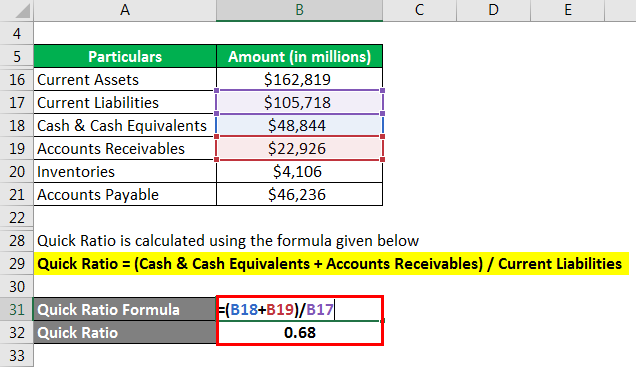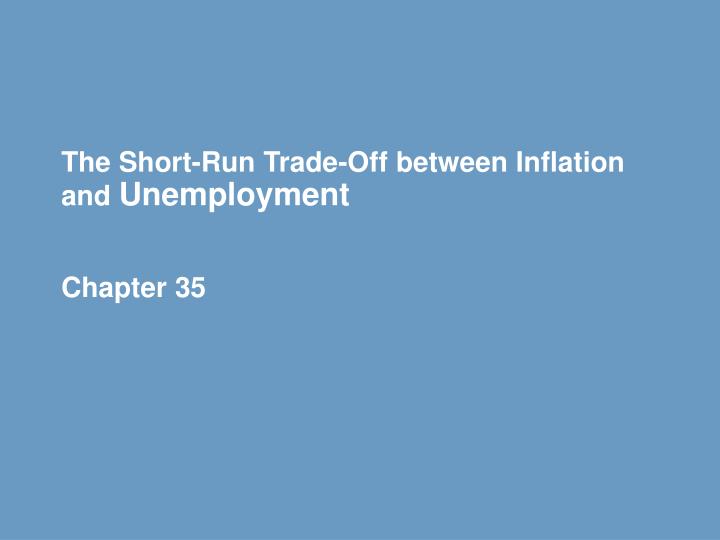Contents:


Direct taxation at times become an instrument of limited applicability, as the vast majority of the people are not covered by it. Further, when the total tax revenue forms a smaller portion of the national income, fiscal measures will not step up the sagging economy requiring massive help. The government uses both monetary and fiscal policy to meet the county’s economic objectives.
In addition, our fiscal balance remains strained, even as calls on the government to invest more into productive investments persist. Through all this, given global easy money conditions, capital flows continue to pour in, increasing our currency reserves and sustaining our equity markets at their all-time highs. In a country like India, fiscal policy plays a key role in elevating the rate of capital formation both in the public and private sectors. Policy may have to be sharpened to address domestic demand affected by persistent inflation. In simple words, we can say that fiscal policy alludes to the use of government spending and tax policies to make an impact on financial situations. Expansionary fiscal policy is a form of fiscal policy that involves decreasing taxes, increasing government expenditures, or both, to fight recessionary pressures.
UK brings forward fiscal measures after budget turmoil
But they should also give this government the benefit of doubt and time to translate its laudable vision into recognisable reality. More broadly, a basic misunderstanding is driving complacency in fiscal policy. The budget and its analysts alike have focused on the medium-term path of fiscal adjustment.
The expansionary fiscal policy can likewise lead to inflation due to more demand in the economy. This is because even a moderately limited stimulus if insightfully focused on, can have a multiplier impact across the whole economy. The flipside of the expansionary fiscal policy is a contractionary fiscal policy, which includes increasing taxes or diminishing government spending, shifting aggregate demand to the left.
What is one of the problems with the implementation of fiscal policy?
Inaccurate Information. Poor information results in fiscal policy sufferings. For example, if a government anticipates a recession, it might want to increase aggregate demand. However, if the prediction is wrong, the economy might grow too rapidly, and trigger an inflation.
In India, the Monetary Policy is under the Reserve Bank of India or RBI. Monetary policy majorly deals with money, currency, and interest rates. On the other hand, under the fiscal policy, the government deals with taxation and spending by the Centre. Through the fiscal policy, the government of a country controls the flow of tax revenues and public expenditure to navigate the economy. If the government receives more revenue than it spends, it runs a surplus, while if it spends more than the tax and non-tax receipts, it runs a deficit. To meet additional expenditures, the government needs to borrow domestically or from overseas.
Prime Minister Narasimha Rao launched what has come to be known as India’s ‘Look East Policy,’ linking India to the new growth engines of Asia”. Five states – Rajasthan, Chhattisgarh, Jharkhand, Punjab and Himachal Pradesh – have informed the Centre about their decision to go back to the old pension scheme. “Resources have to be judiciously used. The CAG audits the income and expenditure of governments in accordance with constitutional provisions. That is our core job,” Murmu said. India, along with China, has emerged as one of the key buyers of Russian crude.
The current monetary policy framework would then indeed be useful to curb inflation. Third, there are several interest rates in our economy, and the policy repo rate alone is insufficient to influence them all appropriately. The RBI retains other critical tools such as banking liquidity and market operations. Beyond these, government fiscal policies and external flows can also greatly impact different interest rates. Fiscal policy means the use of taxation and public expenditure by the government for stabilization or growth of the economy. The hypothesis of supply-side financial aspects suggests bringing down corporate expenses rather than income taxes, and promoters for lower capital additions charges to expand the business venture.
Current Affairs
The economic theory tells us that the optimal amount of capital formation serves a useful key to economic growth in developing economies. At the same time, the economic distortions brought about by lack of adequate fiscal incentives can cause capital formation to fall short of the socially optimal level. Monetary Policy is issued by the communications and actions of a central bank which handles the chain of money supply, in the forms of cash, credit, money market and checks. Credit is the most vital form of monetary policy, which includes bonds, loans and mortgages. RBI’s job involves balancing short-term as well as long-term growth, ensuring economic growth while meeting the inflation targets.
They do so by using budgetary tools to either increase spending or cut taxes, the two of which give customers and organizations more money to spend. The national income should be properly distributed so that the fruits of development are fairly shared by all people. Equality in income, wealth and opportunities must form an integral part of economic development and social advance.
Jeff Sadow: Conservatives leverage La. into better budget – The Franklin Sun
Jeff Sadow: Conservatives leverage La. into better budget.
Posted: Wed, 03 May 2023 15:33:00 GMT [source]
Whenever left unchecked, a drop in aggregate demand can make an endless loop, whereby feeble purchaser demand drives organizations to contribute less, which further pushes down interest, etc.
Stock Market
Governments spend a significant proportion of GDP anyway and so marginal increases in the rate of expenditure are unlikely to have an overall significant outcome. The expansion in the money supply makes it lose its significance concerning the related items, and greater expense is set for restricted products. For instance, manufacturers who acquire a work will likewise spend additionally making occupations somewhere else in the economy. From the public authority’s underlying infusion the last expansion in genuine GDP will be more than the underlying investment. Before learning the Expansionary Fiscal Policy, you need to gain some knowledge of fiscal policy.

Inflation is running at 8.5%, a rate that is among the highest in the emerging markets. Fiscal deficits are at 7% of GDP, and the current account deficit is at 2% of GDP, kept in check only by a growth collapse and controls on the imports of gold. A terrible monsoon is about to produce lower growth, higher inflation, and increased expenditures. This budget needed to anticipate these contingencies by creating a cushion to withstand possible shocks. While recent recovery is gratifying, our economy is battle scarred, weak, and needs delicate handling.
Instead, our framework is simplistic, and boils down this immense complexity to one where the policy rate lever alone is to be pulled to target retail inflation. Sadly, economics and markets follow their own laws, and are not bound by acts of Parliament. Critically analyse the challenges faced by the banks in the transmission of monetary policy. Food inflation, which impacts the common people the most, is prone to supply-side bottlenecks, which are out of the scope of any remedy under the aegis of monetary policy of RBI.
Eventually, we will need to debate and formally adopt a more realistic integrated policy framework. High fiscal deficit leads to more market borrowing by the governments. Better policies targeted at efficient taxation and government spending should be used to influence the economy in the long run.
While it tolerates inflation between 2% and 6%, there is no mention of growth, external balance or any other secondary objective for monetary policy in the RBI Act. Easy money policy is needed to increase economic activity during slowdown. Thus, RBI needs to balance inflation targeting and accelerated economic growth. Fiscal policy also feeds into economic trends and influences monetary policy. To meet the additional expenditures, it needs to borrow from domestic or foreign sources, draw upon its foreign exchange reserves or print an equivalent amount of money. Though the fiscal policy has an important place in economic development and in particular, in the stepping up of saving and investment both in public and in private sectors, it has the following limitations.
Chapter: 11th 12th std standard Indian Economy Economic status Higher secondary school College
This year’s https://1investing.in/ account surplus is temporary, and there is little evidence yet of carry-seeking flows chasing our interest rates. Inflation suggests that domestic production could still be a challenge. The 36-country trade weighted real effective exchange rate shows that the rupee still remains overvalued by over 16%. One way around this would be for the government to directly borrow from savers through a special Corona Bond, rather than from banks and the RBI. Let us go beyond the perennial and valid argument that given food comprises 48% of the consumption basket, the ability of interest rates to control CPI inflation in India is suspect. Consider the efficacy of interest rates in controlling even pure monetary inflation, the kind caused by too much money chasing too few goods.
- Still, a purist might well argue that credit growth is creating fresh money at a time of high inflation, and hence interest rates would still need to be raised.
- RBI not only needs functional independence, but it needs to follow a more pragmatic financial policy.
- The hypothesis of supply-side financial aspects suggests bringing down corporate expenses rather than income taxes, and promoters for lower capital additions charges to expand the business venture.
- Action taken by the government may not always have the same effect on all the sectors.
Also, there is a high demand for goods and services, and organizations gear ready for rising production in terms of quality and quantity. Higher utilization will raise total interest and this should prompt higher financial development.This infusion of money into the economy can likewise cause a positive multiplier impact. The main motive of the government is to lower unemployment, raise consumer demand, and also avoid a recession. During recession periods, aggregate demand drops as organizations and buyers cut back on their spending.
An expansionary fiscal policy looks to expand aggregate demand through a blend of expanded government spending and tax reductions. The thought is that by placing more money under the control of buyers, the government can encourage monetary action during seasons of financial compression. Expansionary fiscal policy is applied at the point of time at which the government enhances the money supply in the economy.
The First Step to Solving the Housing Crisis Might Be Simpler Than … – POLITICO
The First Step to Solving the Housing Crisis Might Be Simpler Than ….
Posted: Thu, 04 May 2023 08:30:00 GMT [source]
Inflation has been bad for consumers and savers but great for debtors and a bonanza for the biggest debtor of all, namely the government. On the other hand, the flow problem stems from high fiscal deficits keeping inflation high and the current account under pressure. That defies credibility given that nominal GDP growth is unlikely to exceed 13-14% (9% for inflation plus 5% for real GDP growth). It also defies credibility because already in the first quarter of this fiscal year, 45% of the annual deficit number has been reached. Strategically, it always pays to under-promise and outperform rather than the other way around, especially because this government has the luxury of a long time horizon for action. Moral suasion refers to the RBI’s recommendations to commercial banks that aid in the restraint of credit during inflationary periods.
Government spending and taxation cuts have consequences for the government deficit; there are also limits to the utility of stimulus in a globalised economic system. B Government spending and taxation cuts have consequences for the government deficit; there are also limits to the utility of stimulus in a globalised economic system. There are several advantages of expansionary fiscal policy like, if done correctly it works very fast, expands profitability, during the recession it works as a fuel to the financial development, and many more. The fiscal policy gives adequate incentives to the private sector to expand its activities. In this context, the Government should consider, Multiple Indicator Approach of RBI, where price stability, financial stability and economic growth are considered for decision-making.

Large scale underemployment, lack of coordination from the public, tax evasion, low tax base are the other limitations of fiscal policy. Accordingly, the budget should at least have started reducing the aggregate fiscal deficit by 0.3 to 0.5 percentage points. Instead, the fiscal deficit might deteriorate further, moving in the opposite direction in light of India’s fragile situation. But fiscal policy is hugely important, and when correctly measured, this budget will either entail no fiscal adjustment or even some fiscal relaxation. In his view, these shortcomings are remediable over time as the government forges the required political deals and improves administrative capacity to implement difficult policy actions. The focus of the govt in the budget should be on supporting the segments of the economy that would need help in coming back on their feet in FY2024.
Inflation in emerging markets such as India is very sensitive to exogenous shocks like global oil prices, a weaker rupee and a poor monsoon. For example, even though the current inflation rate is at around 3%, there is a slowdown in the economy and GDP growth was at 6 year low of 5% in the April-June 2019 quarter. Fiscal policy of India always has two objectives, namely improving the growth performance of the economy and ensuring social justice to the people. The main motive of the expansionary policy is to support total interest to compensate for setbacks in private demand.
What is a major problem with using fiscal policy quizlet?
A problem that makes fiscal policy less effective is that: higher taxes or increased borrowing to fund government spending can reduce aggregate demand.
Thus, RBI needs to follow a pragmatic monetary policy and its current policy that largely focuses on inflation targeting must be reviewed. Global Financial crisis of 2008 showed that monetary policy defined by inflation targeting can no longer be treated as the centerpiece of macroeconomic policy. There is a conflict of interest in RBI managing the monetary policy and selling bonds for the government which require keeping interest rates low and thus is inflationary.
D fiscal policy shortcomings is often wasted and is inefficient, so it is not economically advisable to spend government money in this way. If the government cuts income tax, at that point this will enhance the disposable cash flow of purchasers and empower them to expand spending. Expanded government spending, through, regularly on open works, to boost the overall level of employment. Expansionary Fiscal Policy is one of the most effective tools used by the governments to promote monetary activities during the time of recession.
What are the problems shortcomings of fiscal policy?
Answer and Explanation: The major problems with fiscal policy are deficit spending, crowding out, timing, political considerations, and effects on international trade. Some government policies to stabilize the economy have long term implications.